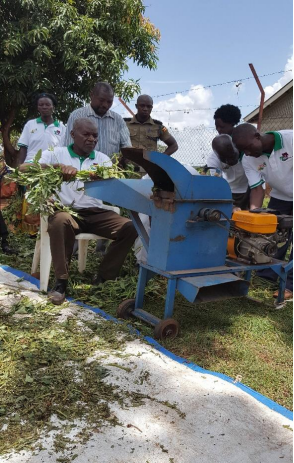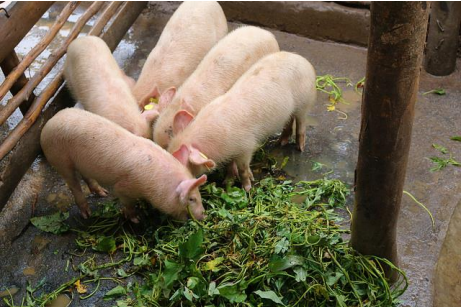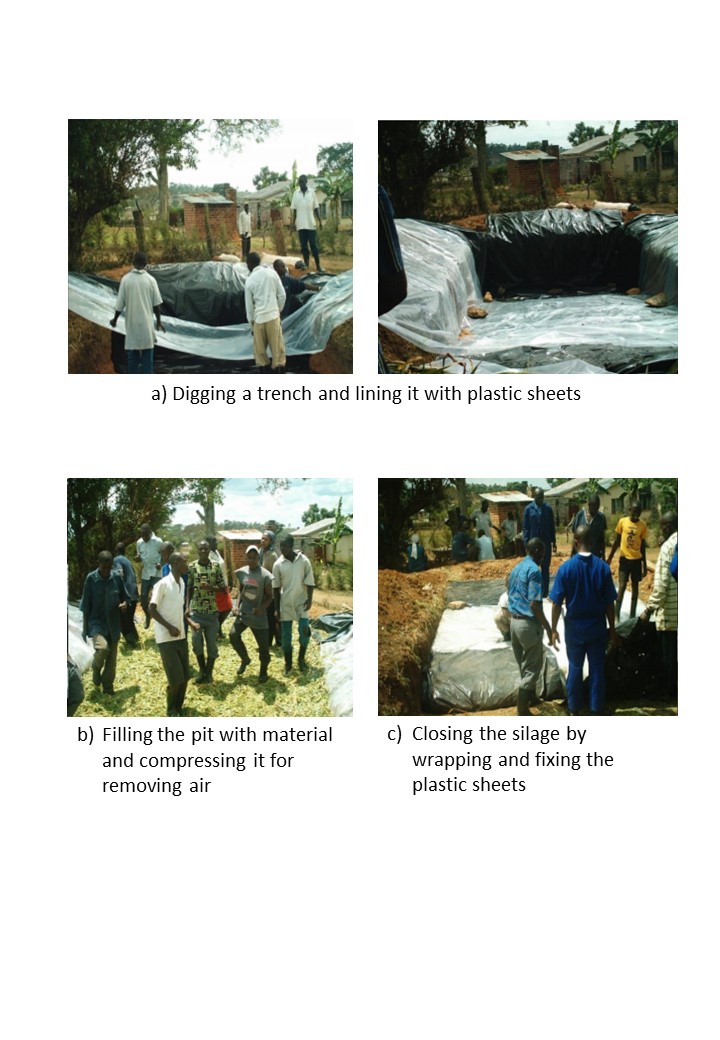Silage production from sweet potato vines and tubers
Résumé
Processing leftover vines and small/twisted tubers of sweet potato into silage provides a high quality fodder for all class of ruminants and pigs, and helps to avoid that these resources perish under moist and hot conditions and to bridge persistent or intermittent gaps in fodder availability for farmers. The fermentation of feedstocks that takes places is enhancing their digestibility and conserves all proteins and carbs, making it an excellent complement to grass feeds. Adding silage to the normal rations of ruminants helps them to grow fast because it has a large nutrient content, and fills their stomachs so they do not feel the pangs of hunger and start spending body reserves.
En savoir plus sur la solution
Sweet potato silage is made by chipping residues of vines and tubers with no commercial value into small pieces and fermenting these under moist and air-free conditions. The process causes the breakdown of trypsin enzymes that are found in fresh vines and reduce the digestibility and nutritional value for ruminants. Putting silage into plastic sheets or containers has several advantages compared to traditional open pit systems because there are no losses of nutrients through drainage and degassing, as well as much lower risks of spoiling the silage during storage and feeding. Manual compacting drums and mechanized baling presses are available that enable to achieve optimal moisture contents and high storage densities for silage, suitable for subsistence and commercial farmers. These improved forms of silage can make leftover sweet potato vines and tubers ready-to-eat for livestock in a minimum of three weeks and allows to keep it stored for up to a year whereby providing farmers and breeders various opportunities to better manage fodder supply.
Sweet potato silage is ideally suited to complement grass-based feeds like Napier cuttings and maize stover for lactating dairy cows, beef breeding cows, pigs (sows), sheep and goats, and can be fed to heifers and piglets of three months. Farmers in Kenya have found that using this mixture of feedstocks in silage lead to a 10% larger milk production compared to sole grass feed regimes. Proper conservation of sweet potato residues can help address the shortage of nutritious feeds during dry seasons and related price fluctuations that many livestock farmers are struggling with. It also provides avenues to reduce waste in rural and urban areas that can open up business opportunities for youth and women.
Residues from vines and poor quality tubers from sweet potato are collected when harvesting the crop. Freshly gathered vines need to be chopped into pieces of 5 - 7 cm long (2 - 3 inch) and fresh roots need to be made into chips/chunks of less than 1 cm (0.4 inch). For the fermentation process to go on well, chopped vines and chipped tubers should be mixed in the right ratio (usually 70:30), and soaked in water containing molasses (10:1 ratio) and some salt (0.05 percent).
Cutting of vines and chipping of tubers can be done by hand but takes a lot of work, an electric chipper can allow to process large amounts of feedstock into optimal sizes for silage. Sheet plastic with a thickness of 0.1 mm or plastic containers can be used in various ways to create air and water tight conditions; the most recommended being ‘bag silos’ where silage is compressed into tubes that are sealed on both ends, ‘stack silos’ where silage is piled up into mounds, and ‘trench silos’ where pits of up to 2 m are dug. Silage can be compacted using a metal drum fitted with tubes for draining air and excess water on which people and weights push down the feedstock which is suitable for small scale silage production. There are medium to large sized mechanized press systems available that can be operated by grid electricity or generator. Once silage has been opened it needs to be fed to livestock in a short enough time to avoid it getting spoiled, as for this the size and means of storage have to be adapted to the different contexts of subsistence and commercial farmers.
Commercialisation
Disponible dans le commerce
Images de la Solution
Institutions

Solutions d'Accompagnement
Orange-fleshed sweet potato (Bio-fortified, Drought and virus tolerant)



